As a guinea pig owner, you may be wondering if your furry companion can safely consume millet. While this grain can be a nutritious addition to their diet, it’s crucial to consider their dietary needs and compatibility with millet.
In this section, we’ll explore whether guinea pigs can eat millet, the nutritional value it provides, how to introduce it into their diet, and potential precautions to take. By following our safe pet diet tips, you can ensure your guinea pig’s well-being while providing them with delicious and healthy meals.
Key Takeaways:
- Millet can be safely incorporated into a guinea pig’s diet for added nutritional variety.
- It’s essential to understand guinea pigs’ dietary needs and digestive system before introducing millet.
- Proper portion sizes and frequency are crucial for maintaining a balanced diet.
- Watch out for any signs of allergies or digestive issues when introducing millet.
- Consult a veterinarian if you have any concerns about incorporating millet into your guinea pig’s diet.
Understanding Guinea Pig Diet
Guinea pigs thrive on a diet rich in vitamin C, fiber, and low in fat. Understanding a guinea pig’s nutritional needs is crucial for maintaining their overall health and well-being.
Their diet should consist of high-quality hay, fresh vegetables and fruits, and guinea pig pellets. Providing a balanced diet is important to prevent health issues such as dental problems, obesity, and scurvy.
Guinea pigs have a unique digestive system that requires constant access to hay to keep their digestive tract functioning properly. Additionally, introducing new foods too quickly can cause digestive upset and should be done gradually.
In the following sections, we will discuss the specific nutritional requirements of guinea pigs, the nutritional value of millet, and how to introduce it into their diet, ensuring your furry friend is happy and healthy.
What Is Millet?
Millet is a type of small seed that belongs to the grass family Poaceae. It is widely cultivated and consumed in many parts of the world, including India, China, and Africa. Millet is known for its versatility and easy cultivation, making it a staple food crop for many cultures.
Millet comes in various forms, including pearl, foxtail, finger, and proso millet. Each type differs in flavor, texture, and nutritional properties.
One of the benefits of millet is its rich nutritional composition. It is a good source of protein, fiber, vitamins, and minerals, such as magnesium, iron, and zinc. Additionally, millet is naturally gluten-free, making it a suitable option for individuals with celiac disease or gluten intolerance.
Guinea Pigs and Millet Compatibility
Guinea pigs have unique digestive systems that require specific nutritional needs to maintain optimal health. Before incorporating millet into their diet, it’s crucial to analyze if it’s compatible with their nutritional needs and digestive system.
Millet is generally safe for guinea pigs in small amounts. However, it should not be a primary source of their diet as it can lead to obesity and other health issues. In addition, millet should be introduced gradually, allowing guinea pigs to adjust slowly, while monitoring for any adverse reactions.
Millet contains high levels of fiber, and while it can help regulate digestive functions, too much fiber can cause digestive issues, leading to discomfort and bloating in guinea pigs. Therefore, it’s essential to provide limited portions and balance millet with other nutritional foods.
Is Millet Safe for Every Guinea Pig?
While millet is generally safe for guinea pigs, it’s always essential to consult with a veterinarian before introducing new foods. Certain guinea pigs may have specific dietary needs that can be compromised by the introduction of millet.
In summary, before incorporating millet into your guinea pig’s diet, understand their nutritional needs, start with small quantities, and be cautious of potential digestive issues.
Nutritional Value of Millet for Guinea Pigs
Millet is a nutritious grain that can provide important vitamins and minerals to guinea pigs. It is rich in B vitamins like niacin and thiamin, which support healthy skin, metabolism, and nerve function. Millet also contains minerals like magnesium, phosphorus, and potassium, which are important for bone health, energy production, and heart function.
Additionally, millet is a good source of fiber, which helps regulate digestion and prevent constipation in guinea pigs. The high fiber content can also promote a feeling of fullness, helping your furry friend maintain a healthy weight.
However, it is important to remember that millet should not be the sole component of a guinea pig’s diet. While it can provide great nutritional value, it is still important to incorporate a variety of fresh vegetables and hay into their meals to ensure a balanced diet.
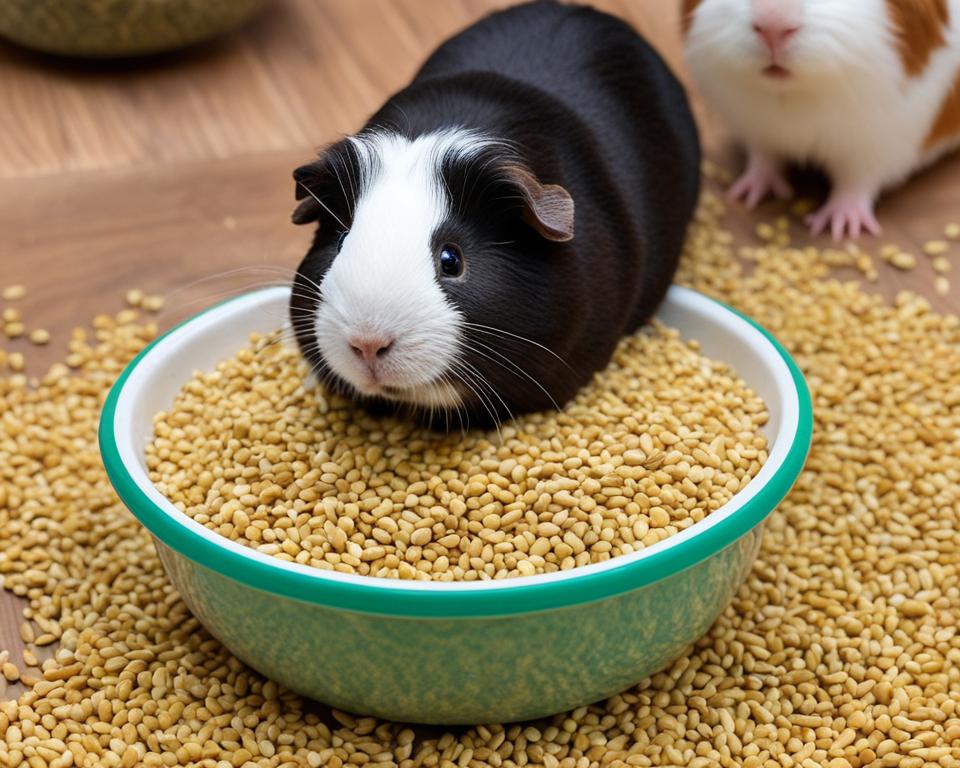
Potential Health Risks
While millet can be a safe and healthy addition to a guinea pig’s diet when introduced in moderation, it is important to monitor their intake and watch for any potential allergic reactions or digestive issues. Millet is also high in carbohydrates, which can contribute to weight gain if given in excessive amounts.
If you notice any negative changes in your guinea pig’s behavior, such as lethargy, diarrhea, or loss of appetite, it is important to consult with a veterinarian right away to ensure their health and well-being.
Introducing Millet into a Guinea Pig’s Diet
Millet can be a nutritious addition to a guinea pig’s diet, but it’s important to introduce it properly to avoid any potential digestive issues. Before incorporating millet into your guinea pig’s diet, be sure to consult with a veterinarian to ensure it aligns with their nutritional needs.
Start by introducing a small amount of millet. Monitor your guinea pig closely for any adverse reactions, such as diarrhea or bloating. If they have no issues, you can gradually increase the amount over time. It is recommended to offer millet as a treat on occasion, rather than a regular staple in their diet.
If you notice any digestive issues or allergies, remove the millet from their diet immediately and consult with your veterinarian. It’s better to err on the side of caution when it comes to your furry friend’s health.
Recommended Portions and Frequency
Guinea pigs require a balanced diet that includes a variety of foods, and millet can be a great addition to their meals. However, it is important to provide appropriate portions and frequency to avoid any potential health issues.
The recommended portion of millet for guinea pigs is one tablespoon per day, no more than twice a week. Serving too much millet can lead to weight gain and digestive problems. A balanced diet should consist of high-quality hay, fresh vegetables, and a small amount of fruits.
- Avoid overfeeding: Offering millet too often or in large portions can cause digestive issues, obesity, and other health problems.
- Introduce gradually: When introducing millet, start with a small amount and gradually increase over several days. Watch for any signs of allergies or digestive issues, such as diarrhea or gas.
- Consult a veterinarian: If you have any doubts or concerns about the proper amount or frequency of millet to feed your guinea pig, consult a veterinarian. They can evaluate your pet’s health and provide recommendations tailored to their needs.
By providing the appropriate amount and frequency of millet, you can ensure that your guinea pig receives all the necessary nutrients and enjoys a varied and balanced diet.
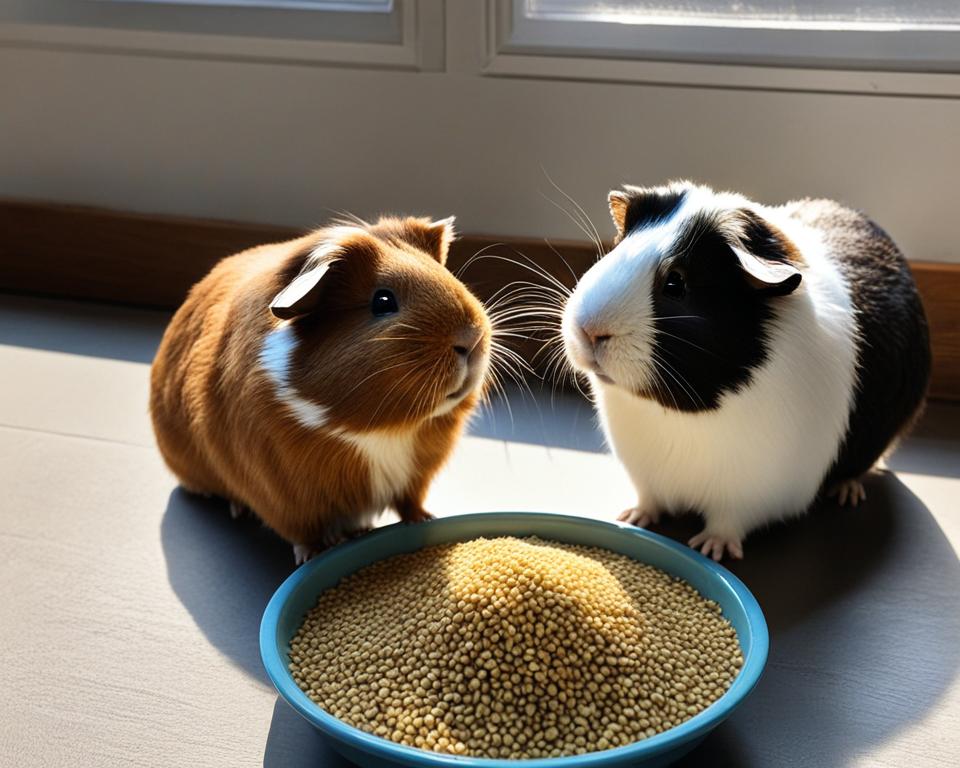
Signs of Allergies or Digestive Issues
While introducing millet into your guinea pig’s diet, some signs may indicate if your guinea pig has allergies or digestive issues. Guinea pigs may exhibit diarrhea, vomiting or reduced appetite if millet does not agree with them. Additionally, they may have difficulty breathing or skin irritations if they have an allergy to this grain. However, note that these symptoms may occur with any new food introduced, not just millet.
If you notice these symptoms, stop feeding millet to your guinea pig and consult with your veterinarian. They may suggest an elimination diet to identify the root cause of the reaction. Always take your guinea pigs’ health seriously, and the right diet can improve their life quality.
Conclusion
After exploring the compatibility and nutritional value of millet for guinea pigs, we can conclude that it can be incorporated into their diet safely. However, as with any dietary change, caution should be exercised. Properly introducing millet gradually and monitoring your guinea pig for any allergic reactions or digestive issues is vital to their well-being.
When including millet in a guinea pig’s diet, ensure that it is in appropriate portions and frequency. It should not replace their staple diet of hay, fresh vegetables, and water. If you have any concerns about your guinea pig’s diet, consult a veterinarian for additional guidance.
In summary, millet is a nutritious addition to a guinea pig’s diet, providing variety and essential nutrients. With proper care and attention, your furry friend can enjoy the benefits of this grain as part of a healthy and balanced diet.
FAQ
Can guinea pigs eat millet?
Yes, guinea pigs can safely eat millet as part of their diet. However, it should only be offered in moderation as a treat and not be the main component of their meals. It is important to provide a balanced diet that includes hay, fresh vegetables, and other guinea pig-specific pellets to ensure their nutritional needs are met.
What is the nutritional value of millet for guinea pigs?
Millet is a grain that provides essential nutrients for guinea pigs. It contains vitamins such as vitamin B6 and niacin, minerals like magnesium and phosphorus, and dietary fiber. However, it is important to note that millet is high in carbohydrates, so it should only be given in small quantities to prevent weight gain and other health issues.
How should I introduce millet into my guinea pig’s diet?
When introducing millet to your guinea pig’s diet, it is best to start with small amounts and closely monitor their reactions. Offer a small piece of millet and observe if they enjoy it and experience any digestive issues. If they tolerate it well, you can gradually increase the portion size over time. Always introduce new foods slowly and consult with a veterinarian if you have any concerns.
How often should I feed millet to my guinea pig?
Millet should be given as an occasional treat and not be a regular part of your guinea pig’s daily meals. Offer it once or twice a week in small quantities to avoid disrupting their balanced diet. Remember to prioritize their primary food sources, such as hay and pellets, which provide the necessary nutrients for their overall health and well-being.
What signs should I look for to detect allergies or digestive issues related to millet?
When introducing millet into your guinea pig’s diet, monitor them closely for any signs of allergies or digestive issues. These may include diarrhea, excessive gas, bloating, lethargy, or changes in appetite. If you notice any of these signs, it is important to remove millet from their diet and consult a veterinarian for further guidance.

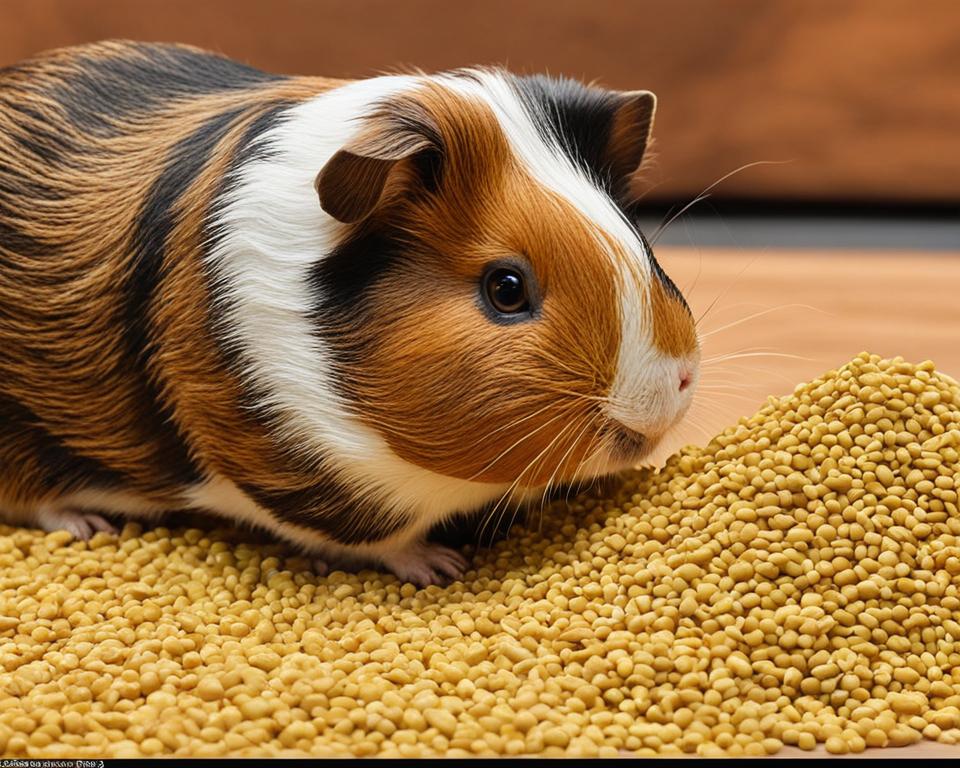
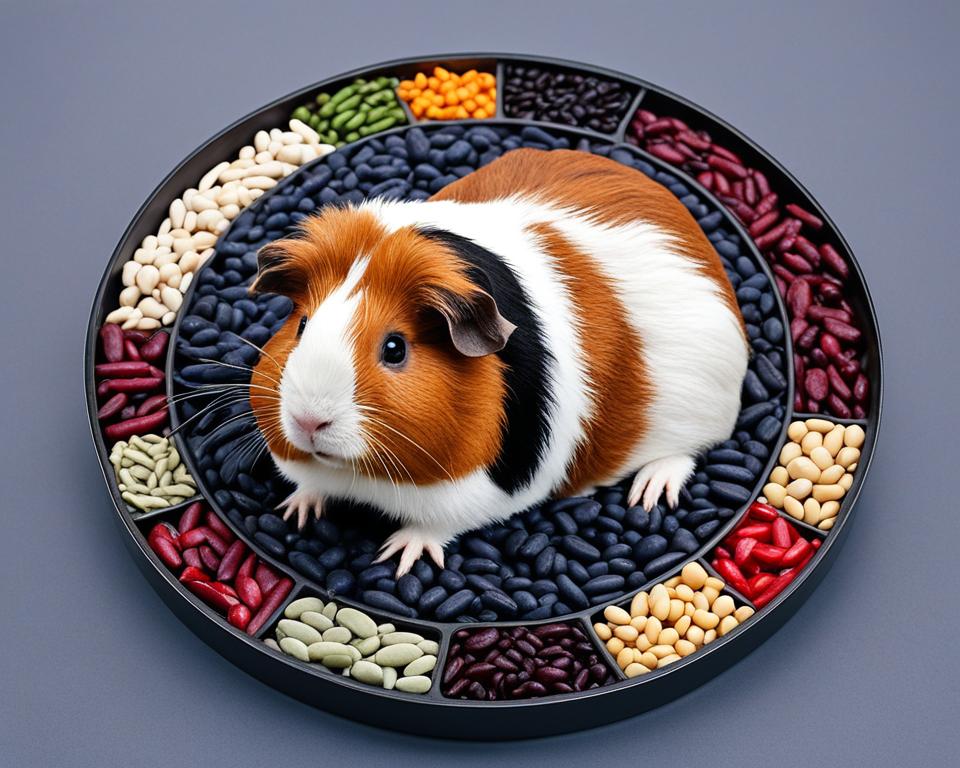
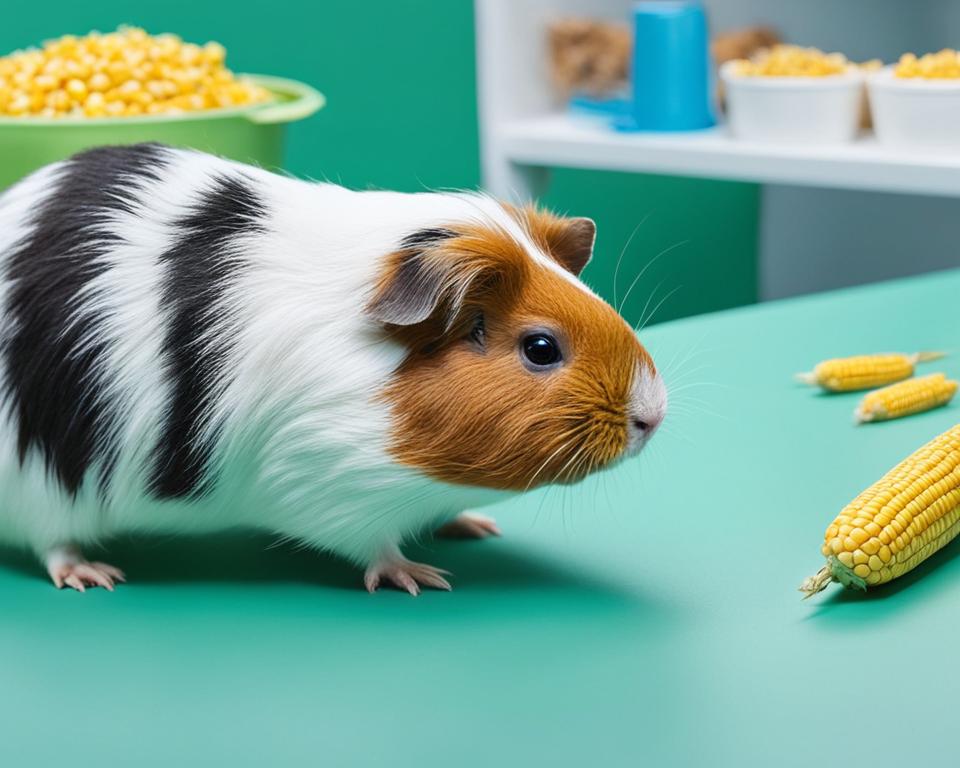
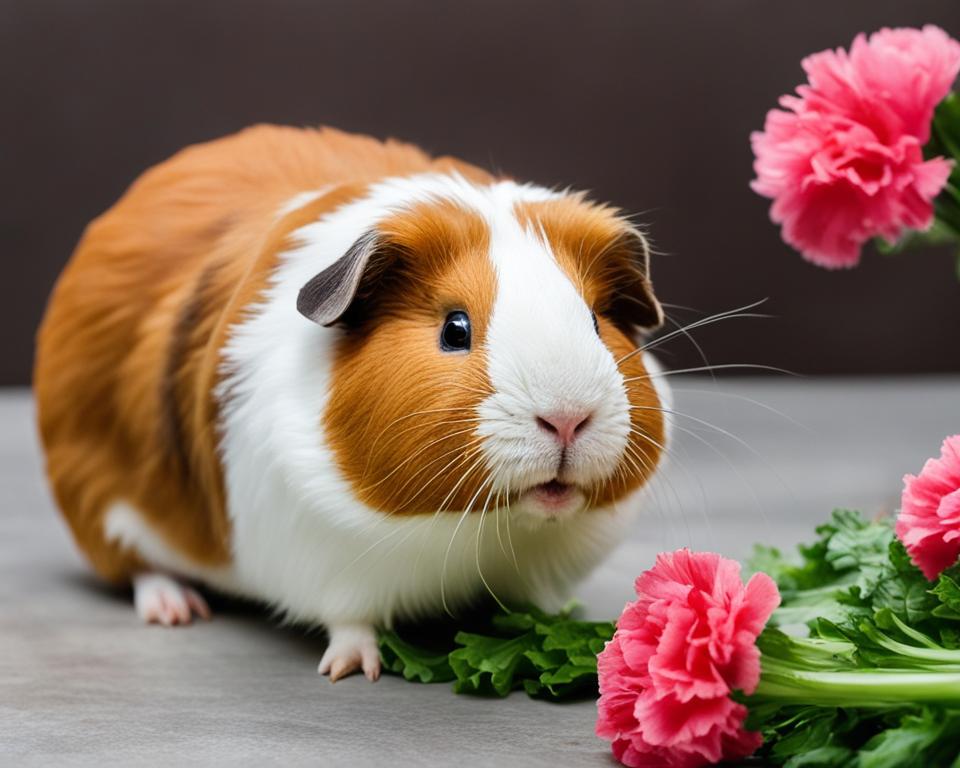
Leave a Reply